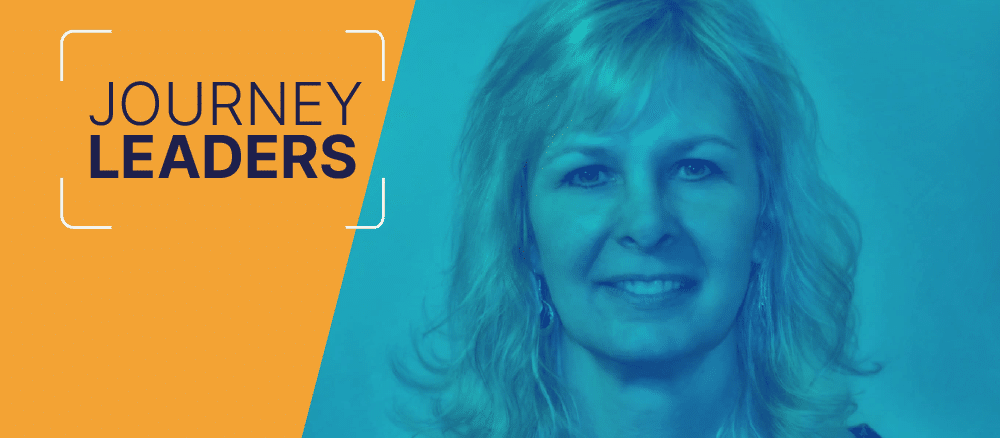ATD sees colleges as strong engines of economic and social mobility with a pivotal role to play in creating more vibrant communities. For this to be achieved, institutions must commit to a thoughtful process of direct influence that sets a course for long-term community success. This process starts with seeing and understanding local communities in new ways, improving access for those who have been disconnected from postsecondary education, and tracking the right institutional metrics to ensure progress and success for all student groups — all of which should lead to upward mobility for individuals and their families, and help communities flourish and thrive economically. At the core, none of this is possible without addressing systemic inequities at both institutional and community levels.
Seeing local opportunities in new ways
While educational attainment has improved in the U.S., with more Americans gaining a college degree than ever before, many are still not attending college. As a result, they are less likely to experience economic and social mobility over time. Across the ATD Network, community colleges are putting equity at the center of their institutional reform efforts. Our inaugural Community Vibrancy Cohort of 16 colleges is now thinking more deeply about local populations they have failed to reach. Some examples include BIPOC populations, households living below the federal poverty level or experiencing financial hardship, people living in subsidized public housing, immigrants and refugees, migrant workers, the justice-impacted population, youth aging out of the foster care system, and youth who are neither in school nor working. Strong outreach to those who have been left behind is paramount if community colleges are to strengthen their role as true engines of economic and social mobility.
“It is more important than ever that colleges understand the lived and learned experiences of the students they serve.”
—
Affordable and equitable access for these populations is an integral part of building individual and community prosperity. Colleges must collaborate with community partners to reduce cost of attendance (including tuition, books, fees, transportation, and childcare) and improve FASFA completion and registration yield. Promise programs and open educational resources (OER) are good examples of strategies used by some colleges to make higher education more affordable.
But these strategies alone are not enough. It is more important than ever that colleges understand the lived and learned experiences of the students they serve — or will serve — in order to create more welcoming places and an enriched sense of belonging for all students. Then there is the need to streamline onboarding processes so they are easier to navigate, especially for those who have never attended college. Colleges must also move away from exclusionary entry programs and biased entrance exams and get students on career paths offering living wages and opportunities for upward mobility.
Ensuring early momentum & progression
Once in college, students must be provided the support they need to succeed. For many, this includes basic supports through food and clothing pantries, transportation vouchers, mental health services, affordable childcare, and other personal support. It also means colleges must address structural barriers that prevent student success. Many ATD Network colleges are working diligently to break down these institutional barriers, but more work is needed.
Most important is the first year of college when many students stop out or drop out. Colleges must be steadfast in their commitment to reverse this trend, starting with increased capacity to recognize early signs of student disengagement. Students who miss a class, do not turn in a homework assignment, or who stop participating in discussion posts all show early signs of detachment. Colleges must be structured to provide proactive, personalized outreach and early intervention when needed. Academic support should be available to students who need it the most. All students should complete gateway math and English in their first year and earn a sufficient number of credits to ensure timely completion. Tracking credit accumulation, gateway course completion, and other early momentum metrics should inform institutional improvements to narrow equity gaps and help more students succeed.
“A sense of belonging within the community is important for learners’ dignity and empowerment, the creation of stronger social networks, and improved civic engagement and participation.”
—
Creating upward mobility
Speaking of success, college completion should no longer be the end goal. In fact, we are now referring to completion and four-year transfer as “milestone” metrics, and thinking of workforce outcomes and return on investment as the end goals. Recent studies by The Brookings Institution and the Community College Research Center reveal that many community college awards do not lead to good paying jobs, jeopardizing upward mobility and the ability of individuals and families to recoup financial investments in higher education in a timely manner. Many are questioning whether a college education is worth the cost, given skyrocketing student loan debt. Colleges should be tracking graduate employment and earnings by academic program (or clusters of programs) to inform continuous improvement. All learning and credentialing should be structured for enhanced labor market value.
Without a serious focus on workforce outcomes and return on investment, colleges are in jeopardy of doing more harm than good. Consider again the populations that have been left behind: If we bring them into college but fail to successfully get them into careers offering living wages, the end result is greater financial burden for those who already experience significant financial hardship.
In addition to economic mobility, social mobility is another worthy end goal. Today, too many marginalized populations are segregated to neighborhoods with limited social capital. Just as colleges are working diligently to create a deep sense of belonging within their institutions, a sense of belonging within the community is equally important for learners’ dignity and empowerment, the creation of stronger social networks, and improved civic engagement and participation.
Envisioning what’s possible
If colleges are successful in eliminating inequities in workforce outcomes, societal gains are possible. Learners and their families can strengthen their earning potential and recoup their financial investment in higher education in a shorter time. They can grow social networks within the communities where they live, work, and play. They can have a greater sense of belonging, autonomy, and pride, ultimately contributing to stronger civic engagement and community participation. Some may pursue homeownership and will be in a better position to invest in early childhood and postsecondary education for generations to come.
In turn, communities can experience lower unemployment and stronger labor force participation. They may witness fewer children whose parents lack secure employment. The community is likely to see gains in educational attainment and higher median household income, coupled with fewer people living at or below poverty. There could be less reliance on public assistance and an increased tax base. Higher rates of homeownership and more racially integrated neighborhoods are possible.
While strategic partnerships are necessary to bring about this level of change, community colleges must first recognize the contributions they can make toward more equitable and economically vibrant communities. Realizing this position of direct influence will help colleges plan, dedicate resources, and implement change to create improved outcomes for individuals and society as a whole.
Shara Davis currently serves as senior fellow for special projects at Achieving the Dream. She has also served as a holistic student supports coach and a guided pathways consultant throughout her eight year tenure with ATD. Shara retired from Lorain County Community College in 2017, a Leah Meyer Austin Award winner, where she served as dean of research, institutional effectiveness and public services.



